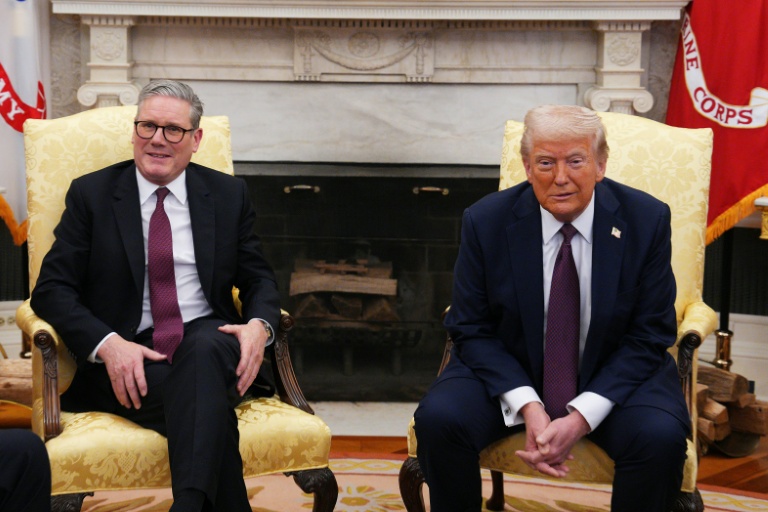New York (AFP) – The US auto workers union halted work at a giant Stellantis truck plant on Monday, expanding a five-week strike hitting Detroit automakers.
The United Auto Workers action means that 6,800 workers walked off the job in Sterling Heights, Michigan, where the European auto giant assembles the highly profitable Ram 1500 pickup trucks.
On Friday, UAW President Shawn Fain reported progress in talks with Stellantis, but said further concessions were necessary for a deal that would end the stoppage.
The UAW’s press release said Monday’s action was needed because Stellantis’ current offer lags those from General Motors and Ford.
Following the announcement, officials with the Sterling Heights UAW on Monday organized strike logistics, including to enable employees to sign up for strike pay.
The strike plan calls for about 500 workers at plant gates each day for assigned strike shifts, said Michael Spencer, vice president of UAW Local 1700.
“This is in support of us getting a fair and equitable contract,” Spencer told AFP in a phone interview.
“They’re moving in the right direction, but they haven’t gotten there yet.It’s time for them to get serious at the negotiating table.”
But Stellantis blasted the latest strike escalation, saying it was “outraged” after last week presenting an improved offer to the UAW.
“Following multiple conversations that appeared to be productive, we left the bargaining table expecting a counter-proposal, but have been waiting for one ever since,” Stellantis said.
The strike “actions not only decrease our market share, but also impact our profitability and therefore, our ability to compete, invest and preserve the record profit sharing payments our employees have enjoyed over the past two years.”
The union on September 15 ordered a strike of Stellantis and fellow “Big Three” automakers GM and Ford with a stoppage of just three plants with about 12,700 UAW members.
But as automakers have improved their offers of pay increases and benefits, the union has kept up the pressure by expanding the strike to additional factories.
Automakers have countered by arguing that the strike risks doing lasting damage to a fragile supply chain and asserting that further concessions risks future investments needed for the transition to electric vehicles.
– ‘Record’ contracts not enough –
With Monday’s action, the number of UAW workers on strike now stands at more than 40,000, according to a UAW press release.
“Despite having the highest revenue, the highest profits (North American and global), the highest profit margins, and the most cash in reserve, Stellantis lags behind both Ford and General Motors in addressing the demands of their UAW workforce,” the UAW said.
“Currently, Stellantis has the worst proposal on the table regarding wage progression, temporary worker pay and conversion to full-time, cost-of-living adjustments (COLA), and more.”
The action at Sterling Heights comes on the heels of a similar sudden walkout at Ford’s giant Kentucky Truck Plant in Louisville.
In Friday’s briefing, Fain reported “serious movement” from the companies, with both GM and Stellantis producing new offers within the prior 24 hours.
Fain suggested that the parties were potentially close to a deal — but only if the companies give more.
Fain said he agrees with the companies’ characterization of their offers — which currently amount to 23 percent wage hikes — as “record contracts.”
But “they come at the end of decades of record decline,” he said.
“So it’s not enough to be the best-ever, when autoworkers have gone backwards over the last two decades.That’s a very low bar,” said Fain, adding that “these extremely profitable companies have more to give.”




